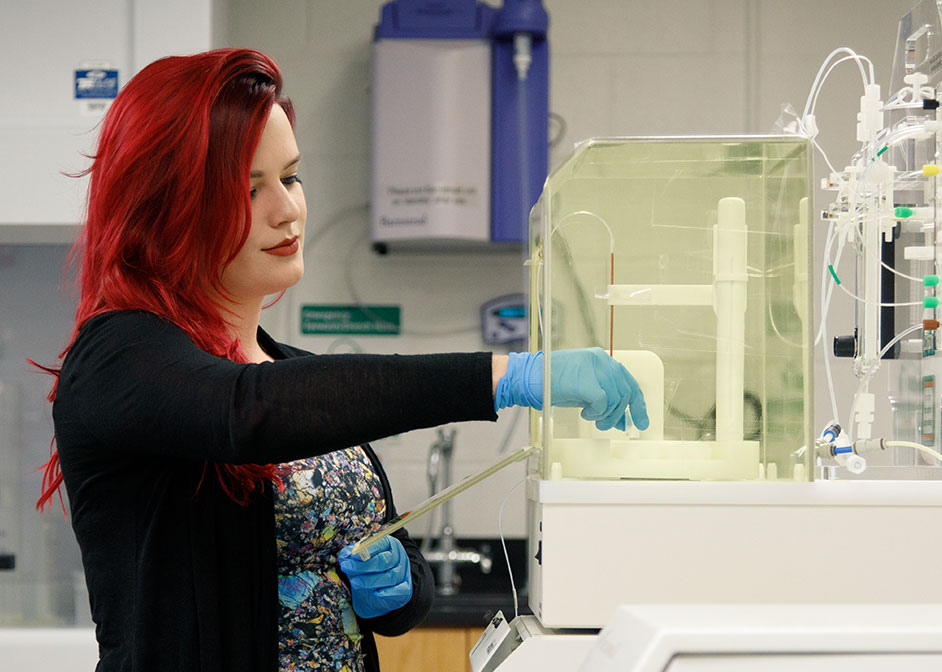Stephanie Suarez Studies Volcanic Activity on Mars
One of the essential skills for thriving in academia is applying for and receiving grants and fellowship awards.

For Stephanie Suarez, a University of Houston graduate student in geology, this is a lesson she’s learned early on. During her time as a student, she has accumulated an impressive number of fellowships, scholarships, and grants, which have supported her graduate education and provided the opportunity to attend meetings and professional development workshops.
Her latest fellowship – the prestigious National Science Foundation Graduate Research Fellowship – comes with three-year annual stipend of $34,000 along with a $12,000 cost of education allowance for tuition and fees.
The fellowship recognizes outstanding graduate students in NSF-supported science, technology, engineering and mathematics disciplines who are pursuing research-based master’s and doctoral degrees.
“Putting together applications for grants and fellowships is like writing a persuasive
essay,” Suarez said. “I’ve thoroughly enjoyed working alongside my research team here
at UH during my master’s, and I'm excited to continue on as a Ph.D. student. Being
able to study physical materials of another planet has been an amazing opportunity.
It's an honor to win this fellowship.”
In addition to the NSF Graduate Research Fellowship, Suarez’s awards have ranged from
NSF-funded professional development workshops and travel grants to attend meetings,
to a Texas Space Grant Consortium Graduate Fellowship.
“Stephanie is very proactive about taking advantage of all available opportunities,” said Tom Lapen, a professor of geology in the College of Natural Sciences and Mathematics and Suarez’s advisor. “This is an extremely good indicator for success.”
Volcanic Activity on Mars
Suarez’s research focuses on understanding volcanic activity on Mars. She is analyzing a group of 11 meteorites, volcanic in origin, which were ejected from the surface of Mars 1.1 million years ago, falling to Earth at various times.
These meteorites are assumed to be from the same impact, during which something slammed into the surface of Mars, carving out a huge crater that threw fragments into space. The ages span from 327 million to 2.4 billion years old, which suggests they are from an area on Mars with layers of accumulated lava flows.
“Even if we sent a robot to Mars that could drill through all those rock layers, we would still have to bring the samples back. So this is a unique opportunity to examine these layers,” Suarez said.
Establishing Ages for Group of Martian Meteorites
Suarez’s area of expertise is geochronology, or determining the ages of rocks, a subject she first became interested in as an undergraduate. When she started looking around for graduate schools, she realized UH offered exactly what she wanted, only three highway exits away from where she grew up.
“I was looking for a research project that combined my interests in geochronology and volcanic rocks. This project had that while also being about Mars,” Suarez said. “How cool is that?”
For her research, Suarez is working on dating additional Martian meteorites. This will give scientists an idea of the composition of the magma found in the interior of Mars, along with the frequency of the lava flows.
“We currently have billion year gaps between the samples. By dating the rest of these meteorites, we can fully assess when volcanic activity at this proposed location turned on and off,” Suarez said.
Moving forward, Suarez plans to continue her research, while making sure to access the support she needs for success.
“Stephanie does all of us a service here at UH by getting out there and sharing her successes and experiences,” Lapen said.
- Rachel Fairbank, College of Natural Sciences and Mathematics